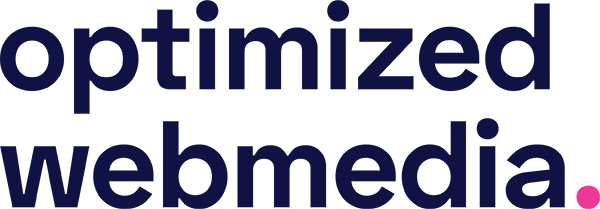
Jump ahead to:
Coronavirus (COVID-19): How the Federal Government is Supporting Small Businesses in Canada
With the ongoing COVID-19 pandemic, we know you need cash flow to keep your doors open and employees paid. We’re pushing the federal government to provide the relief measures you need to keep your business alive.
So far, here’s what the federal government is doing to support small business. We will continue updating this page with the latest information as it becomes available—and continue pushing governments for greater relief.
For all the details, read the federal government’s full program.
CRA
75% Emergency Wage Subsidy
The federal government will provide a 75% wage subsidy to eligible small businesses.
Who is eligible?
- Businesses (regardless of the number of employees)
- Individual employers
- Partnerships
- Not for profit organizations
- Charities
that experienced a 30% reduction of their revenue in March, April or May.
How do I calculate a 30% reduction in revenue?
You will have to compare your revenue for the month you wish to receive the subsidy with your revenue for the same month last year and show a 30% decrease.
As the subsidy is for salaries paid since March 15, the three claiming periods are the following:
- March 15 to April 11: compare March 2020 over March 2019.
- April 12 to May 9: compare April 2020 over April 2019
- May 10 to June 6: compare May 2020 over May 2019
For employers established after February 2019, eligibility would be determined by comparing monthly revenues to a reasonable benchmark. More details to come.
What is the eligible period?
For salaries paid between March 15 and June 6.
How much can I receive?
For employees hired before March 15, the subsidy will cover the lesser of:
- 75% of the pre-crisis weekly remuneration paid (up to $847 per week); or
- Current weekly remuneration paid (up to $847 per week).
For new employees (hired after March 15), it will cover 75% of the current remuneration paid (up to $847 per week).
More details to come on how to define pre-crisis weekly remuneration.
For example,
- If you have one employee hired in January with a pre-crisis weekly pay of $1000 and that this employee has now a weekly pay of $800, you will receive a subsidy of $750.
- If you have one employee hired in January with a pre-crisis weekly pay of $1000 and that this employee has now a weekly pay of $500, you will receive a subsidy of $500.
- If you hire a new employee in April, with a weekly pay of $500, you will receive $375.
Do I have to pay the remaining 25%?
All employers would be expected to at least make best efforts to top up salaries to 100%.
How can I apply?
Businesses will be able to apply through the CRA’s My Business Account portal as well as a web-based application. Businesses will have to apply every month.
More details to come.
What if I am not eligible?
You will be able to use the 10% wage subsidy (see details below). Using the 10% wage subsidy will reduce the amount you will be able to receive from the 75% wage subsidy.
How does this work with CERB?
Your employees cannot receive CERB if they receive employment income.
What if I have to lay off my employees?
You will still receive the subsidy for the remunerations paid after March 15 (if you are eligible).
For example, If you are eligible for the claiming period going from March 15 to April 11 but you had to lay off you employees on March 31, you will receive the subsidy for remunerations paid between March 15 and March 31. Your lay off employees will remain eligible to receive CERB.
More details from the government are available here.
10% Wage Subsidy
- Canadian-Controlled Private Corporation (incorporated) eligible to the small business deduction or non-profit organizations, registered charities; and
- Have an existing business number & payroll program account with CRA on March 18; and
- Pay salary, wages, bonuses, or other remunerations to an employee.
Eligible period:
For salaries paid between March 18 to June 20, 2020
How do I calculate the subsidy?
It is a 10% subsidy, so if you have 2 employees that you pay $1,500 each, every two weeks, the subsidy will be $150 * 2 = $300
What is the maximum subsidy I can receive?
Over the 90 days period, the limit is $1,375 per employee and $25,000 per employer
How do I receive the subsidy?
You can reduce your remittance of federal, provincial, or territorial income tax that you send to the CRA by the amount of the subsidy. You will be able to keep a portion of your employees’ income tax instead of giving it all to CRA
For example, if you have 2 employees for a total bimonthly labour cost of $3,000 and you deduct $700 from their pay for the federal and provincial income tax, you will be able to remit to CRA only $400 and keep the remaining $300 for you as you have a subsidy of $300 (as calculated above)
The calculation is the following: Planed income Tax remittance – 10% subsidy = New Income Tax remittance
You cannot however reduce your remittance of Canada Pension Plan contributions (CPP) or Employment Insurance (EI) premiums.
When can I receive the subsidy?
In the first remittance period that includes remuneration paid between March 18, 2020, and June 20, 2020
For more details, see the Frequently Asked Questions from CRA.
Tax filing & Payments
Deadline extensions
- Individuals have until June 1, 2020, to submit their income tax return.
- For trusts (having a taxation year ending on December 31, 2019), tax filing is deferred until May 1, 2020.
Payment Deferral
Individuals and businesses will be able to defer their income tax payment (for taxes owe between March 18, 2020 and September 2020) until after August 31, 2020.
Payment deferral for GST/HST remittances
Businesses will have until June 30 to remit GST/HST due to the government. This applies to
- Monthly filers for amount collected in February, March and April for
- Quarterly filers for amount collected between January 1 and March 31.
- Annual filers, whose GST/HST return or instalment are due in March, April or May
See more details here.
Payment deferral for customs duties remittances
Payment deadlines for customs duties and GST on imports collected in March, April, and May are being deferred to June 30.
Canada Emergency Response Benefit (CERB)
This will replace the emergency care benefit and the emergency support benefit previously announced. All Canadians who have ceased working due to COVID-19, whether they are EI-eligible or not, will be able to receive the CERB.
How much can I receive?
A flat rate of $2,000 a month for up to four months. The benefit is taxable but no tax will be taken directly from the cheque, instead it will be payable next year.
Who can apply?
The CERB will cover workers residing in Canada who:
- Have lost their job
- Are sick, quarantined, or taking care of someone who is sick with COVID-19
- Are working parents who must stay home without pay to care for children who are sick or at home because of school and daycare closures
- Are still employed, but are not receiving any income because of disruptions to their work situation due to COVID-19
and:
- Had income of at least $5,000 in 2019 or in the 12 months prior to the date of their application; and
- Are or expect to be without employment or self-employment income for at least 14 consecutive days in the initial four-week period. For subsequent benefit periods, they expect to have no employment income
The CERB will apply to:
- Wage earners
- Contract workers
- Self-employed individuals who would not otherwise be eligible for Employment Insurance (EI). This includes sole-proprietors.
Can I receive CERB and EI in the same time?
No, Canadians cannot receive EI regular and sickness benefits and CERB in the same time but:
- Those who are already receiving EI regular benefits will continue to receive the same benefits until the end of their benefit period. If these benefits end before October 3, 2020, they may then apply for the CERB if they meet the eligibility requirements.
- EI claims of those who became eligible for EI regular or sickness benefits March 15th onward will be automatically processed through the CERB. After 4 months of receiving CERB, they will still be able to apply for their regular EI benefits if they are still unemployed. Receiving CERB first will not affect their eligibility to receive EI benefits after.
Can I receive benefits from my province and CERB in the same time?
Yes. For example, in Quebec you can receive the temporary aid for workers from the Quebec government and CERB from the federal government.
How do I apply?
There are two ways to apply:
- Online with CRA My Account
- Over the phone with an automated phone service by calling the 1-800-959-2019
You will have to re-apply every month.
More details here.
Note: Service Canada and the Canada Revenue Agency (CRA) deliver this benefit jointly so If you have already applied for Employment Insurance, you do not need to re-apply.
When can I apply?
Canadians will be able to apply starting April 6 and will begin to receive their CERB payments within 10 days of application. The CERB will be paid every four weeks and be available until October 3, 2020.
To avoid issues with the CRA portal, the best day to apply will depends of your month of birth. If you were born in:
- January, February and March, the best day is April 6
- April, May and June, the best day is April 7
- July, August and September, the best day is April 8
- October, November and December, the best day is April 9
In order to receive your benefit faster, make sure that you have signed-up for direct deposit with CRA and that the information you provided is up to date.
More details here.
See the full FAQ from CRA here.
Other CRA measures to help small businesses
- Boosting Canada Child Benefit payments by 300$ per child
- CRA will recognize electronic signatures as having met the signature requirements of the Income Tax Act as a temporary administrative measure.
- Audits: No more post assessment GST/HST or Income Tax audits for the next four weeks.
- Collections: Collections activities on new debts will be suspended until further notice, and flexible payment arrangements will be available. More details here.
- The Liaison Officer Service will be available over the phone to discuss tax measures that are being put in place to help small business owners and self-employed individuals in the face of COVID-19. Request a Liaison Officer here.
For more details, read the CRA Covid-19 web page.
Employment Insurance
EI sickness benefits
Regarding the EI sickness benefits:
- The one-week waiting period is waived for 6 months for workers in imposed quarantine or who have been directed to self-isolate. Application may still take several weeks.
- There is no need for a medical certificate to apply.
- Applications to sickness benefits after march 15, and not yet processed, will be automatically considered as an application to CERB.
Note: For your employee to receive their first payment faster, ensure that you do not use the ROE code K for other as it will pull it out of automatic processing.
Work Sharing Program
The Work Sharing Program is a three-way agreement that can be negotiated between Service Canada, the employer and the employee to provide EI benefits to workers who agree to reduce their normal working hour as a result of developments beyond the control of their employers. Changes to the program are:
- Extension of the maximum duration from 38 weeks to 76 weeks.
- The 30 day wait period will be waived for only those who have used the work-sharing program in the past.
- Businesses can now see their application being accepted within 10 days instead of 30.
Financial Support
Government financing
- The new Business Credit Availability Program (BCAP) provides $65 billion of additional support to businesses experiencing cash flow challenges. Funding will be available through BDC, EDC as well as through your bank/credit union.
- There’s been an increase in Farm Credit Canada, which provides credit to farmers and the agri-food sector.
- Farmers with an outstanding Advance Payment Program (APP) loan due on or before April 30 will have an additional six months to repay the loan.
- Farmers who still have interest-free loans outstanding will have the opportunity to apply for an additional $100,000 interest-free portion for 2020-2021, as long as their total APP advances remain under $1 million.
- The government will provide increased flexibility to lenders to defer mortgage payments on homeowner government-insured mortgage loans (details to be announced).
$40,000 Canada Emergency Business Account
Banks will provide interest-free loans (for the first year) of up to $40,000 to employers with $50,000 to $1 million in total payroll in 2019.
Repaying the balance of the loan on or before December 31, 2022 will result in loan forgiveness of 25 percent (up to $10,000).
Small businesses and not-for-profits should contact their financial institution to apply for these loans. Here are the details for the main financial institutions:
Other commitments
Banks have also made a commitment to work with personal and small business banking customers on a case-by-case basis. They would provide:
- Up to a 6-month payment deferral for mortgages
- Opportunity for relief on other credit products


